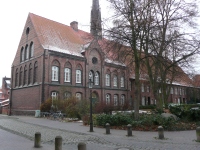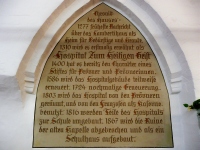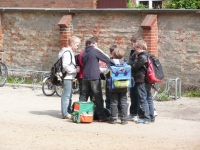
The Heiligengeist School in Lüneburg
The Heiligengeist School in Lüneburg moves between a rich past and a challenging future, as well as between difficult social and spatial conditions and a remarkable cultural wealth.
The school is located on the premises of the Grosser Heiliger Geist (Holy Spirit) Hospital, founded in the 14th century. In 1816 it was the first primary school in Lüneburg, open to all children, wealthy or poor. For a long time the slim needle on the ridge turret of the former chapel was seen as a symbol of social work and education. Today the Heiligengeist School, with its pupils from very diverse backgrounds, mirrors the immense challenges of the globalised world in miniature.
Besides this, children who are slower in language learning are supported in special “language healing” classes that aim at later integrating these children back into conventional classes. At the same time, the school specialises in education for intellectually gifted children.
In terms of architecture the school is housed in a listed building in the historic town centre. However, both staff and pupils have to contend with an acute shortage of rooms and other deficits in the building that noticeably affect the learning process.
Characteristic of the Heiligengeist School seems to be: Despite all the outlined tensions and difficulties, the school is a place where working and learning together succeeds.
Thus the school possesses a social and cultural capital that is essential for creating sustainability in our globalised world. Nevertheless, these resources tend to be overlooked, undervalued and undercultivated, both within the school and from outside.
This is where the Growing Sculpture Heiligengeist School Lüneburg starts from.


